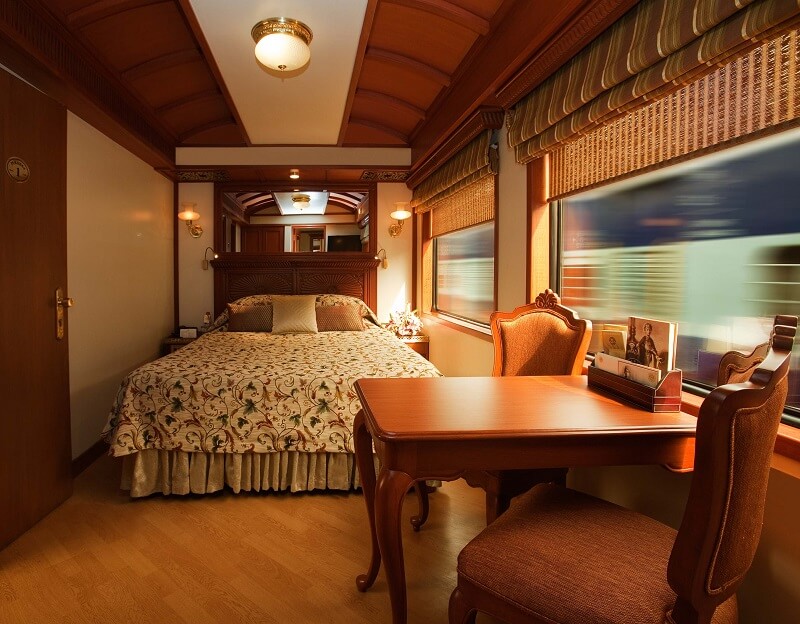Deccan Odyssey
The Maharashtra Tourist Board created the Deccan Odyssey train to encourage visitors to visit less-traveled areas of India. States like Maharashtra and the Deccan in central India were impossible to travel through, even for the most determined travellers, because there were few hotels, guides, or highways. The problem was quickly solved by establishing a train service.
The train, which has been in service since 2004, was recently completely refurbished. Its light and spacious cabins are now furnished with locally sourced textiles. Close inspection reveals that the hardwood furniture is veneered rather than carved, but it is all clean and new. There are two dining cars, a bar, a spa, and a small gym.
Each vehicle has two luxurious cabins as well as a butler to provide personalised service. On board, the service is excellent. The food and service are both excellent. The food is beautifully presented, and the chefs take great pride in their work, strolling along the dining cars to see how well their creations are received.

Deccan Odyssey routes
The Deccan Odyssey’s six routes each focus on a difficult-to-reach portion of India. The seven-night Central India tour is the most relaxing method to visit Hampi’s distant old monuments. The seven-night Hidden Treasures of Gujarat route, which travels from Mumbai to the rarely visited northwest state of Gujarat, is particularly appealing.
Each of the Deccan Odyssey’s six routes focuses on a difficult-to-reach region of India. The seven-night Central India tour is the most relaxing way to see Hampi’s remote ancient monuments. The seven-night Hidden Treasures of Gujarat route, which departs from Mumbai and travels to the rarely visited northwest state of Gujarat, is especially appealing.
When visiting Gujarat, you won’t see any famous landmarks, but you will see a part of India that hasn’t changed much. In this primarily tribal state, you will be welcomed into the villages of the Agarias and Rabari tribes. Little is known about the farming towns on the outskirts of the Rann of Kutch, the world’s largest salt marsh and a surreal luminous white landscape stretching as far as the eye can see.
Gir National Park, the Asiatic lion’s sole surviving habitat, is slowly encroaching on the salt marsh. Asiatic lions have a shorter mane and black speckles on their coats, giving them a silvery appearance. They are slightly smaller than their African counterparts. You can go on a safari into the park as part of the train’s excursion to track the lions; despite their reputation for caution, sightings are common.
The train returns to Mumbai via a circular route that includes stops at Hindu and Jain temples, as well as workshops where you can see some of the state’s textile industry in action. Gujarat silk is well-known as one of India’s finest materials, and it is used to create hand-woven sarees with exquisite patterns, which are a popular Indian wedding attire.
